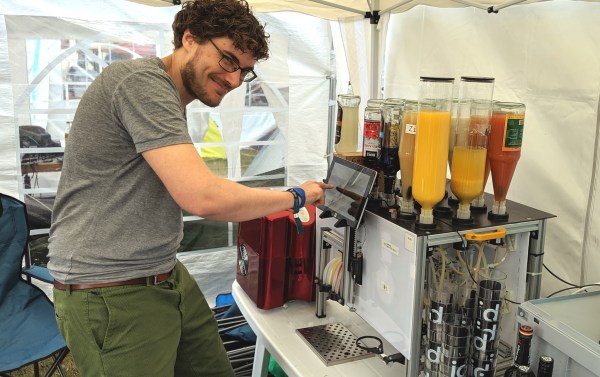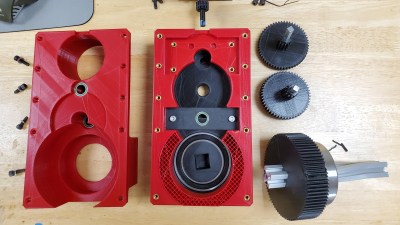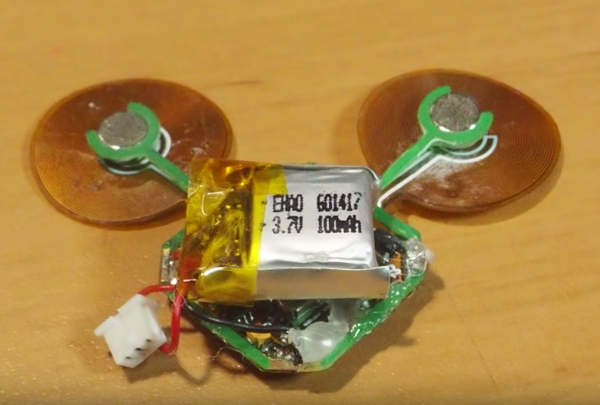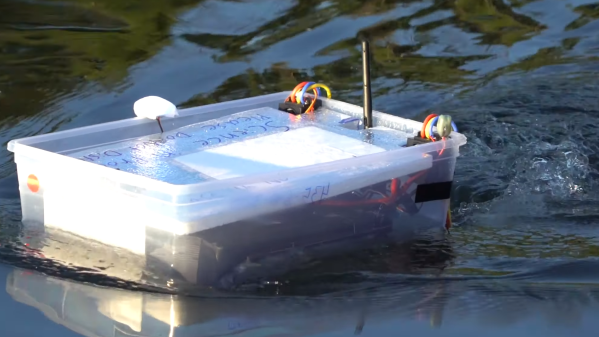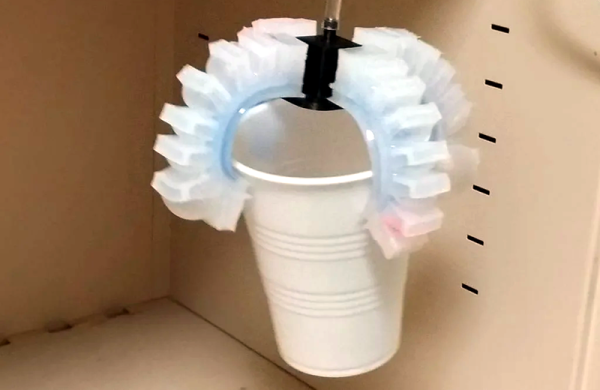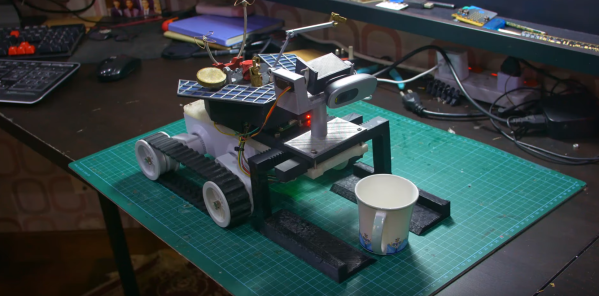[Steffen Pfiffner’s] tent during the Chaos Communication Camp is full of happiness delivered by something greater than alcohol alone. He’s brought a robot bartender that serves up a show while mixing up one of about 50 cocktail recipes.
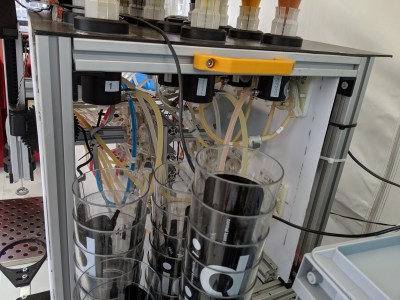 The project is the work of five friends from Lake Constance (Bodensee) in southern Germany, near the borders with Switzerland and Austria. It started, as many projects do, with some late night drinking. The five were toiling to mix beverages more complex than your most common fare, and decided to turn their labors instead to robot making.
The project is the work of five friends from Lake Constance (Bodensee) in southern Germany, near the borders with Switzerland and Austria. It started, as many projects do, with some late night drinking. The five were toiling to mix beverages more complex than your most common fare, and decided to turn their labors instead to robot making.
Since 2012, the project has gone through five revisions, the most recent of which the team calls Uba BOT. Delightfully, the cup tray which moves left and right on the front of the machine is connected using a strain gauge. This provides a way for the robot to sense the presence of a cup to avoid dispensing ingredients all over the bar itself. It also provides a feedback loop that verifies the amount of liquids and volume of ice added to the cup. Once everything’s in the cup, a rotary milk frother lowers itself into position to stir things up a bit.
A Raspberry Pi is in control of eighteen pumps that dispense both liquor and mixers. The team is still trying to work out a way to reliably dispense carbonated mixers, which so far have been a challenge due to over-excited foam. The software was originally based on Bartendro, but has since taken on a life of its own as these things often do. The first time you want a drink, you register an RFID tag and record your height, weight, and age which keeps track of your estimated blood alcohol content based on time and your number of visits to the robot. The firmware also tracks the state of each ingredient to alert a meat-based bar attendant of when a bottle needs replacing.
Join us after the break to see an explanation of what’s under the hood and to watch Uba BOT mix up a Mai Tai.
Continue reading “UbaBOT Mixes Up 50 Cocktails To Quench CCCamp Thirst”

